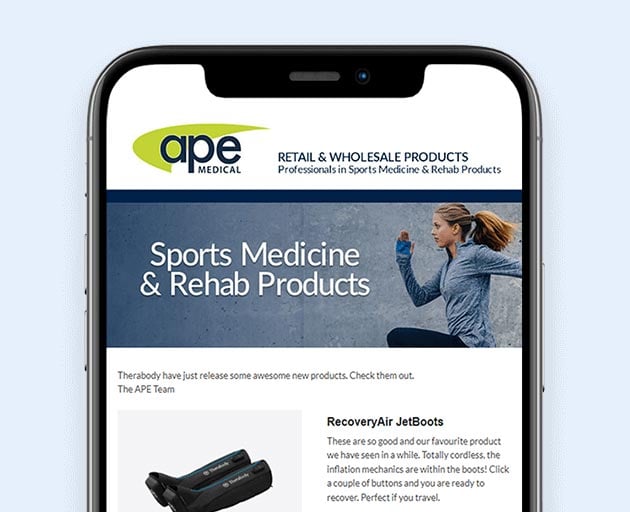Once a player has been deemed to have a soft tissue injury and has been removed from the field of play, initial treatment must be commenced. The treatment a player receives immediately after an injury occurs can significantly affect the ongoing severity of the injury and greatly affect the length of time for the injury to recover.
There have been many acronyms to help remember the process but this is the most common and the aims of all of them are the same- reduce inflammation and bleeding, reduce swelling, reduce pain and improve function as quickly as possible. By addressing all of these factors there will be less scar tissue formation, and improved mobility all of which will improve healing and function. An injury typically needs to have a relative rest period of 2-3 days to allow the bleeding to stop, and for new capillary blood vessels to form.
P.R.I.C.E.R

Protection
The first principle is protection. The purpose of protection is to avoid further injury to the area by protecting the injured structures. The type of protection used varies depending on the injured area but may include a bandage, aluminum splint, sling, protective tape, or over-the-counter brace like an arm sling.
These devices are applied so that the injured structures are protected from further injury. For example, an individual who recently suffered an ankle sprain may initially wear an ankle brace. A good ankle brace should protect the athlete from movements of inversion (movement of the ankle/foot inwards) and eversion (movement of the ankle/foot outwards) because those movements could further injure the damaged ligaments, but would allow the ankle/foot to move up and down.
Rest
The purpose of resting is to allow the body’s own healing processes to naturally occur without being impeded by excess movement of the injured area. Any increase in movement of an injured tissue results in increased circulation to the area which in turn may result in further damage to the injured tissue and/or increased swelling. Gentle movement will help during this period to help remove the swelling and injury debris that has built up, but it does need to be gentle and relatively pain free.
For injuries to the lower extremities, crutches may be a good option for resting the injured area. If an athlete is in enough pain to have a noticeable limp, the athlete should be placed on crutches. The crutches provide a safe means for the athlete to move around while ensuring that the damaged area is not stressed. Athletes can either be non-weight bearing on crutches (injured leg is bent with full weight of athlete on crutches and uninjured leg while walking) or partial-weight bearing (partial weight is placed on injured leg). Athletes may use a combination of these two gaits starting with non-weight bearing for the first 48hours and then moving to a partial-weight bearing gait.
Where possible gentle loading of the area should occur, but in the first few days pain should be respected. It is important to remember that pain is normal at this stage, and feeling an increase in pain is not necessarily a sign of “more damage”. The normal healing chemical cocktail released by the body sensitizes nerve endings making them much more sensitive to normal mechanical stimuli. You do not need to be scared if you are feeling pain. It is normal.
Ice
There are a number of types of cryotherapy that can be used effectively to treat injuries. The most common is a standard ice pack.
Ideally, ice packs are made of crushed ice because the crushed ice is more comfortable for the athletes and conforms to the contours of the injured area better than cubed ice. Ice can be placed into plastic freezer bags. A light barrier should be placed between the skin and the ice bag (paper towel) to prevent injury to the skin during the application of the ice. The ice pack can be secured with a bandage to create some compression as well. The ice should be applied for 20 minutes at a time and then removed. This can be repeated every two hours while the athlete is awake.
The role of ice is really ot reduce pain. If you have less pain then you are more comfortable and you can create more gentle movement.
Compression
A compression wrap should be applied to the injured area. This is the most important component of the PRICER process. So if you can only do one thing then you should compress the area. The compression wrap serves as a mechanical barrier so that swelling is minimized to the injured area. There are a number of compression wraps available on the market, but the most commonly used is an elastic compression bandage or tubular compression bandage such as tubigrip, or cohesive bandages (bandages that stick to themselves and not the skin)
Elastic bandages come in a number of sizes (2”, 3” and 4”) and should be selected depending upon the body part that needs to be wrapped. Be areful to not over-compress the area. If you are feeling tingling or cold extremities then the bandage is too tight and needs to be relased.
Elevation
Elevation is important immediately post-injury to reduce the amount of blood flow to the injured area. For the lower extremities, the athlete can elevate his/her leg by lying down and elevating the injured limb on pillows. The key is that the athlete needs to have the injured area above his/her heart level.
Referral
The final R in P.R.IC.E.R is REFERRAL. Ensure your player is referred to a health practitioner for a complete assessment of their injury and so that a complete rehab plan can be commenced as early as possible. In some instances referral for scans may be required to ensure nothing serious is missed, but trust your clinician to make this decision. The sooner a clear diagnosis is established and rehab program is instigated the better the outcome.
Do No H.A.R.M
In the first 3-5 days follow the below acronym to prevent further tissue damage, bleeding, swelling and pain.
It is suggested to minimise anti-inflammatory intake during this time. The inflammatory stage is important as this is what is going to create new soft tissue and we don’t want to reduce the healing cascade in the first stage. You can take paracetamol for pain control during this time and after 3-5 days move to an anti-inflammatory.







